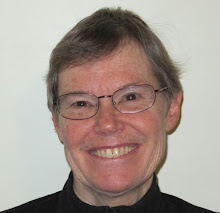Or, follow this link to Turnpike Tales and the Fourth of July.
[Update 2015: that link no longer works, so I am inserting the text below.]
Turnpike Tales and the Fourth of July
Recently I was driving up and down a hilly section of Route
1 in Maine, and it brought to mind the old hills in Danvers. Up and down, up and down, went Route 1 in my
childhood before the road was widened and the hills leveled. My grandfather, too, reminisced about the
hills and told childhood stories of sliding a sled down that road in
winter. He and his friends did not need
to worry about oncoming traffic, he said, because they could hear the sleigh
bells coming from a distance and get out of the way!
My grandfather, born in 1872, was the youngest of eight
children raised at Pine Knoll, the Nichols family homestead at the corner of
Preston Street and the Newburyport Turnpike (Route 1). He described the location as halfway from
Boston to Newburyport, since the halfway marker was nearby. I grew up less than a mile away. By the time
of my childhood, traffic had increased considerably and horse-drawn vehicles
had disappeared, so I was amazed by Granddaddy’s tales of playing on the
Turnpike. He himself expressed amazement
(in 1957, the year before his death) that he had witnessed so many changes
along that section of road on one lifetime.
Watching holiday traffic on Route 1 was especially interesting
in the days of the steep hills before 1950. The family homestead, being on a knoll near the crest of one of the
hills, offered a good vantage point. Looking down the slope to the south, one could see the traffic light at
the Maple Street intersection in the bottom of the valley, and the far hill
climbing up by the Danvers State Hospital.
July 4th was a time of particularly heavy traffic, and also a
time when our family gathered on the knoll.
A big family reunion and picnic was held outdoors at Pine
Knoll every 4th of July. The
great aunts prepared sumptuous food. Aunt Margaret made a strawberry-based
punch that was very popular. Aunt May created a beautiful fruit basket carved
out of a watermelon and filled with delicious fruits. Cousins came from far and wide to enjoy the
day of family activities. There was a tennis court near the pine grove, and
enough space between the house and barn for a softball game. Children enjoyed
watermelon seed-spitting contests, chasing kittens, and looking at old stereo
postcards through an antique viewer. The Pine Knoll home, originally built by my great-grandfather Andrew
Nichols in 1861, was full of treasures from the past. Modern traffic, however, was not far
away.
The traffic sounds carried to our ears, especially when cars
collided. Men from our family would rush
out to assist after an accident and help get the traffic moving again. That’s probably how the spectator sport of
watching traffic began. My father and other men would set up lawn chairs on the
knoll facing the road, and pass the afternoon watching. Collisions were quite
frequent and predictable because of the big hill and the stoplight in the
valley below. When that light turned
red, traffic stopped and backed up far up the hill towards Pine Knoll,
sometimes almost to the crest of the hill. Meanwhile cars coming south from
Topsfield drove quickly over the hill unaware of the column of stopped cars
just ahead. Many “fender-benders”
resulted. Cars in those days (1940’s)
were sturdy and able to withstand such collisions. No serious casualties, just
interlocked bumpers. My father and his cousins became experienced at unhooking
bumpers! By July 1950 a cloverleaf
system had replaced the traffic light and the hills had been cut down, so the
problem of July 4th traffic collisions was solved. The picnics on
the knoll continued for some years, until the aunts became too old and younger
generations lived far away.

1 comment:
I remember my brother and I riding in the rumble seat of my grandfathers Model T Ford with my Dad and Grandad all the way to Maine, and the trouble we had getting up some of the hills you are talking about. Remember the big mirror on top of one of the hills, near Newburyport I think.
Rich
Post a Comment